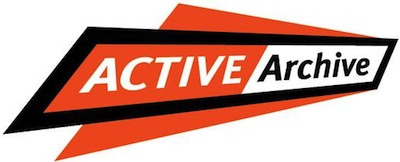The Active Archive Alliance announced it has released its new 2023 State of the Industry Report: Effective Data Management Through Active Archives.
For more information visit: www.activearchive.com
Unedited press release follows:
Active Archive Alliance 2023 State of the Industry Report Now Available
New Report Highlights the Use of Active Archives for Intelligent Data Management
Boulder, Colo., April 24, 2023 – The Active Archive Alliance today announced the availability of its 2023 State of the Industry Report: Effective Data Management Through Active Archives. The report focuses on how an active archive model solves data growth challenges and provides today’s organizations with a way to manage and access their archival data cost-effectively.
“Active archive solutions solve many pressing data storage challenges, including accessibility to the sheer volume and growth of valuable long-term data, tightening IT budgets, cybersecurity concerns and vitally essential sustainability goals,” said Rich Gadomski, co-chairman of the Active Archive Alliance and head of tape evangelism at FUJIFILM Recording Media, USA, Inc. “We are pleased to share this report based on collective insights from our members who are on the frontlines of providing the tools and technology to help companies more easily and cost-effectively manage their data.”
At the center of an active archive resides an intelligent data management system. This software system plays the central role of automatically placing data where it belongs for cost, performance and workload priorities. The data management layer uses technologies such as metadata and global namespaces to make data accessible, searchable and retrievable on whatever storage platform or media it may reside.
Key benefits include:
• An essential active archive principle asserts that today’s enterprises need online access to legacy data. Some use cases may need fast access; in other instances, a longer retrieval time is acceptable. The organization determines its access needs and permissions for users and groups.
• Cost Savings. Through intelligent data management software, an active archive moves inactive data to low-cost storage. For some organizations, data management software can tier older data to warm storage such as hard drives. Then when, by policy, data has aged sufficiently, files can move to more cost-effective storage such as economy disk, tape, optical or even the cloud.
• An active archive can supply a wide range of security features and cyber resiliency capabilities to secure and protect data from cyber threats facing today’s businesses and institutions. Because archival data typically remains unchanged, administrators may use WORM (Write Once, Read Many) or view-only mode features to prevent data from being deleted or overwritten, safeguarding data’s integrity, availability, and confidentiality.
In addition to access, cost and security benefits, an active archive provides technical leaders the flexibility to adapt to new industry trends and growth areas such as sustainability, artificial intelligence and edge computing. This flexibility helps enterprises thrive with possibilities for market leadership, increased revenue and competitive advantages.
View the full the 2023 State of the Industry report here.
Interested in joining active archive solution vendors in advancing modern strategies to solve data growth challenges? Visit the Active Archive Alliance Sponsorship page for more details.
Supporting Resources
More on Active Archive Alliance
Read our Blog
View our Case Studies
Follow us on Twitter, LinkedIn, Facebook
About Active Archive Alliance
The Active Archive Alliance serves as a vendor-neutral, trusted source for providing end-users with technical expertise and guidance to design and implement modern active archive strategies that solve data growth challenges through intelligent data management. Active archives enable reliable, online and cost-effective access to data throughout its life and are compatible with flash, disk, optical, tape, or cloud as well as file, block or object storage systems. They help move data to the appropriate storage tiers to minimize cost while maintaining ease of user accessibility. Members and sponsors include FUJIFILM Recording Media USA, MediQuant, Spectra Logic, Arcitecta, Atempo, ELLKAY, Folio Photonics, IBM, Iron Mountain, Nyriad, Overland Tandberg, PoINT Software & Systems, QStar Technologies, Quantum, Seagate, StorMagic, SullivanStrickler, Swiss Vault, Western Digital and XenData.
